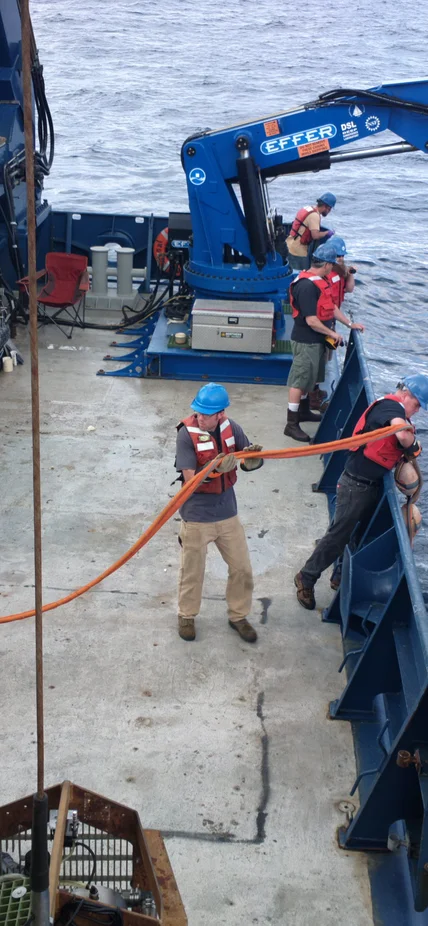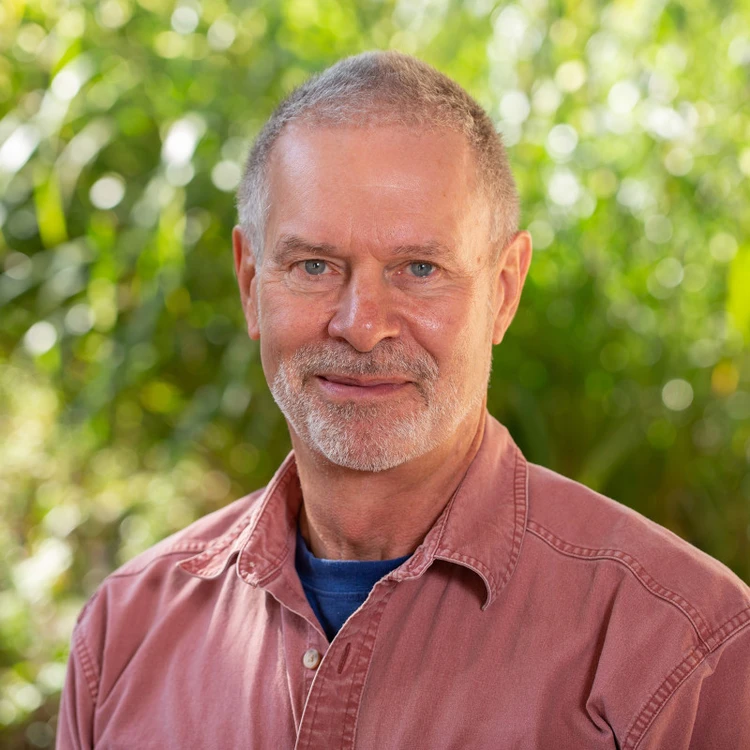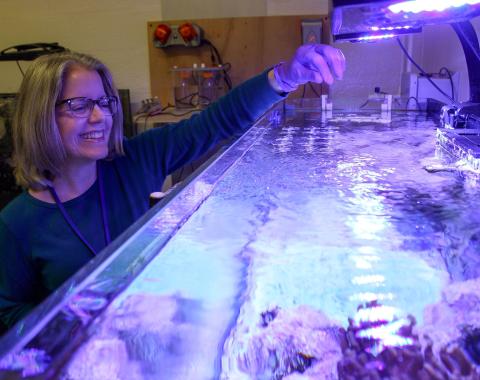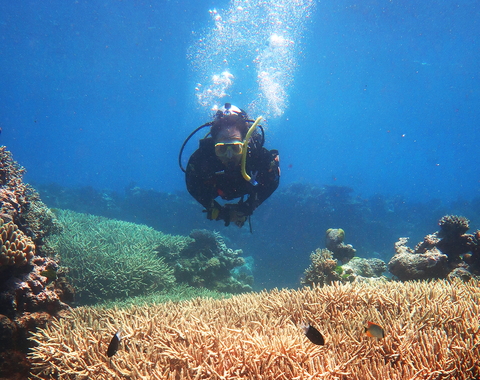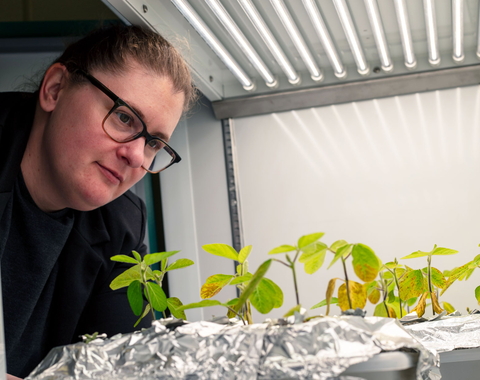Our Top Questions
While we’re fairly certain we won’t meet any sentient aliens in our Solar System any time soon, we think there may be things like microbes populating places as close as our neighbor Mars. The trick may be as simple as knowing what to look for.
Staff scientist Andrew Steele has worked his whole career at Carnegie searching for signs of life in meteorites from Mars and refining and defining protocols to detect an unknown microbe on Mars, in ancient Earth samples, and elsewhere in the Solar System. This has led to the discovery of novel ways organic molecules are synthesized on Mars from the study of Mars meteorites and led to Steele discovering these molecules on Mars as part of the Sample Analysis at Mars team onboard the Curiosity rover and Mars being declared the first habitable world outside of Earth.
“Robust life detection of an unknown alien micro-organism whose biochemistry may be completely different to terrestrial life has been a goal of my research for over two decades” says Steele.
Learn moreWondering about where we came from has occupied the human imagination since the dawn of consciousness. Using samples from comets and meteorites, George Cody tracks the element carbon as it moves from the interstellar medium, through Solar System formation, ultimately to the origin of life.
Primitive meteorites, interplanetary dust particles, and comets are remnants of the early Solar System. The abundant organic matter contained in these primitive bodies records a long chemical history, beginning with reactions that occurred in the interstellar medium, and continuing with reactions that occurred during the formation and evolution of the early solar nebula, and in the formation and evolution of the parent bodies of meteorites. To untangle this record is a challenge: the vast majority of the organic carbon exists as an extremely complex polymer—large molecules with repeating units—that is insoluble by most means.
Cody and colleagues pioneered procedures applying solid-state nuclear magnetic resonance (NMR) spectroscopy to get around the insolubility problem.
Learn moreThe Earth and Planets Laboratory is known for its high-pressure labs for studying minerals under the intense temperatures and pressures found inside of planets. But can we use also use heat and pressure to study life that thrives in extreme conditions? The answer is yes!
Understanding the evolution and function of microbes in extreme conditions, like that of Earth’s deep-sea hydrothermal vents, can help us understand the adaptations of microorganisms to life in extreme conditions on other planets. So we put the pressure on in the lab.
Carnegie’s Dionysis Foustoukos uses high-pressure microbiology techniques developed on campus to study the metabolism of Earth’s own deep-sea microbes in both pure cultures and in their natural deep-sea communities. To do this, he subjects them to the intense temperatures and pressures found at seafloor and subseafloor environments.
We know that Earth’s early atmosphere was low in oxygen and high in methane. It wasn’t a world where multi-cellular life could thrive, but we know methane-eating microbes arose fairly early in our planet’s history. In fact, based on chemical evidence, scientists think microbes probably arose somewhere around 3.7 billion years ago—for comparison, our planet is 4.54 billion years old.
What we want to know is what happened in that pre-biotic time period that led to the development of those early microbes? How did early life impact our planet in return? And can we expect to see a similar development pattern for life on other planets? This is called the abiotic/prebiotic/biotic transition.
One way we’re studying this question is by blurring the boundary between biology, geophysics, and mineralogy. Carnegie scientist Robert Hazen pioneered the concept of mineral evolution—linking an explosion in mineral diversity to the rise of life on Earth.
We can’t look at a planet light-years away to physically see if it has tectonic activity. So what can we learn about a planet by studying them through modern telescopes and instruments?
For one, we can generally tell if a planet is in the habitable zone—where liquid surface water can exist—by measuring the distance to its host star and figuring out its surface temperature from there. But, being in the habitable zone is far from the whole story.
We can also determine a planet’s mass by seeing how it interacts with its host star.
Then there’s the atmosphere. One multi-disciplined and multi-institutional project that is addressing this question is the AEThER project, which aims to define atmospheric signals of abiotic planets in order to rule out false positives.
Anat Shahar, who is the principal investigator on the AEThER project, explains, “In our lifetime, the most likely place we will be able to see signs of life outside of our Solar System is in the atmosphere of another planet.
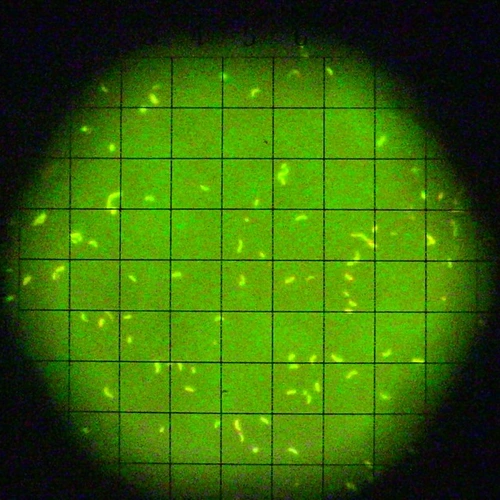
Epi-fluorescence microscopy of acridine orange stained microorganisms collected from deep-sea vents at 2.5 km depth and cultured at high pressure conditions (250 atm). Continuous culturing experiments integrate vent fluid sampling techniques (Isobaric-Gas-Tight sampler, WHOI) with our high-pressure chemostat.
Tools of the Trade
We utilize a wide range of spectroscopic instrumentation for the interrogation of the molecular structure, chemical, and isotopic composition of natural organic materials of biological and non-biological origin, including Raman, FTIR, GC-mass spectroscopy, solid-state NMR, electron microprobe, SIMS, EPMA, and SEM. We also operate chemical and experimental labs for culturing, synthesis, and characterization of organic materials.
All instrumentation